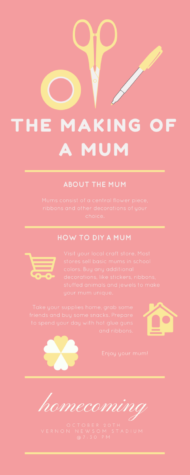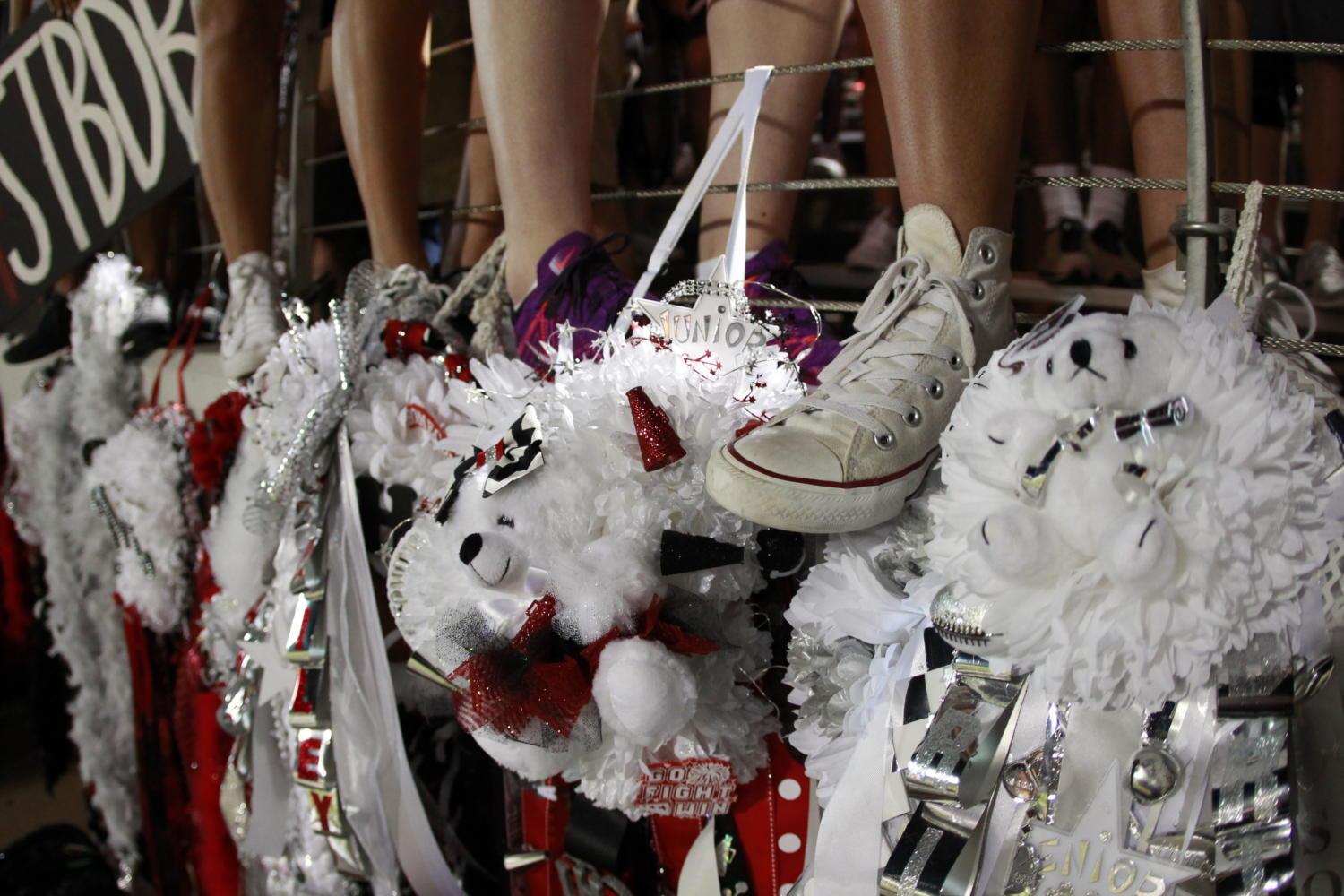Freshman Olivia Lawson stares at the $60 pile of card stock and ribbon in front of her. The craft material surrounding her represents more than an aisle at Michael’s — her creation represents the beginning of her excitement for her first homecoming.
The tradition of mums only exists in Texas and a few other southern states. Mums have developed over the years to become something extravagant and expensive.
Homecoming originated from Mizzou University, when the football coach and athletic director invited alumni to “come home” for one of the team’s games. The idea of this “homecoming” football game soon spread to other schools around the country. The tradition of a boy giving a chrysanthemum flower to his homecoming date as a corsage began in Texas soon after. These flowers cost around $3 and comprised of just one small flower and a few ribbons.
Then, in the 1970s, these chrysanthemums, shortened to just “mums,” started to become extravagant – getting bigger, more decorative and more prominent. They have become more complex as the years continue. Librarian Pamela Pinkerton says mums look very different from how they did when she attended high school.
“Mums are much more massive now.” Ms. Pinkerton said. “When I grew up most mums were single mums and there were only few double mums.”
Mums now typically comprise of multiple large silk flowers, ribbons, charms, cowbells, stuffed animals, jewels and even LED lights. While some students create regular-sized mums, others build massive ones which require special harnesses to keep them on.
“I think it’s unnecessary for the mums and sometimes garters to be huge,” Lawson said. “I do believe that the tradition got a little out of hand.”
Not only have mums become more massive in recent years, but they have also become more expensive. It can cost close to $600 to buy a mum from a professional vendor. This excessive price has turned students away from the tradition. Rather, students, such as sophomore Isabella Estes, plan to create “mini mums.”
“I was planning to make a mum,” Estes said, “but as homecoming got closer, I still didn’t have the time to devote to it nor did I want to spend 200 dollars on it, so I decided to innovate.”
Students create their own mums from craft store supplies to save money, but these supplies can still cost around 50 to 60 dollars total.
“I think [mums] are way overpriced,” Lawson said. “It’s just a whole bunch of ribbon on a piece of cardstock.”
Ms. Pinkerton will offer mum help to students this week after school and during lunches. She made her daughter’s mum and garter when she attended high school. Ms. Pinkerton wanted to fill her extra time, use her leftover mum supplies and share her “hidden talent” for crafting by helping students with their mums.
“Some students struggle [with mums], especially with the cost,” Pinkerton said. “I wanted to reach out and help students who might need assistance. It is a way to continue doing what I enjoy.”
The size of mums vary based on grade level. Seniors wear white mums with four flowers. Juniors wear mums with three flowers. Sophomores wear mums with two flowers and freshman one flower. Senior mums cost the most, but the idea of homecoming seems more significant to them.
“I’m definitely putting more effort into homecoming this year,” senior Maddi Kirby said. “Every other year I wasn’t really interested in the idea of homecoming or mums, but this year I’m just really excited for homecoming and it’s definitely more important to me.”
Mums can cost more than most high schoolers can afford, demand a large amount of time to create and require extensive effort. But, mums have become more than pounds of glue, ribbon and flowers – they represent one of the most memorable parts of homecoming.
“I think mums just represent having fun,” Estes said. “It’s just fun to do events and have those fun, quirky things that go with them. Mums are part of traditions that people find joy in taking part in.”




